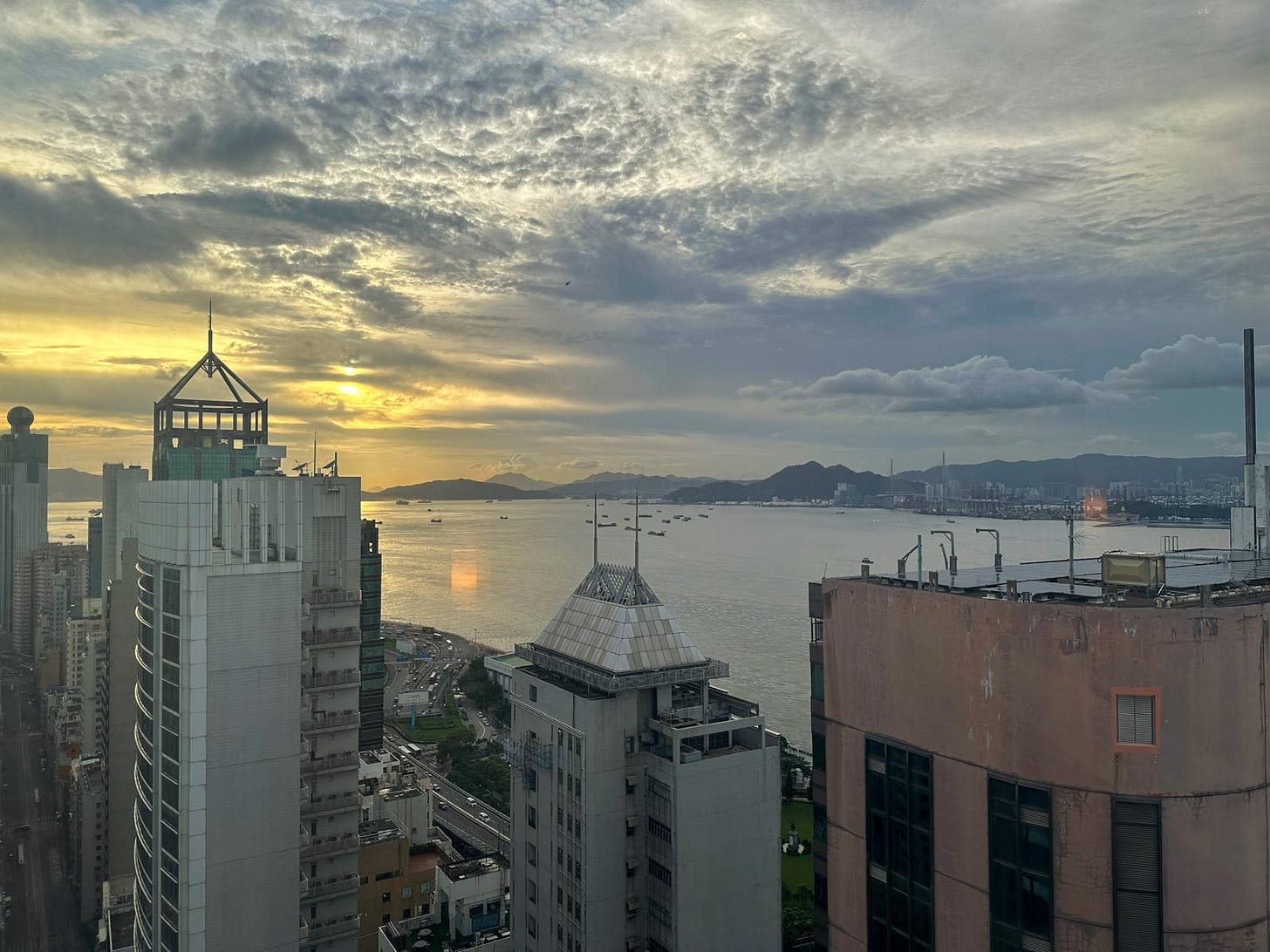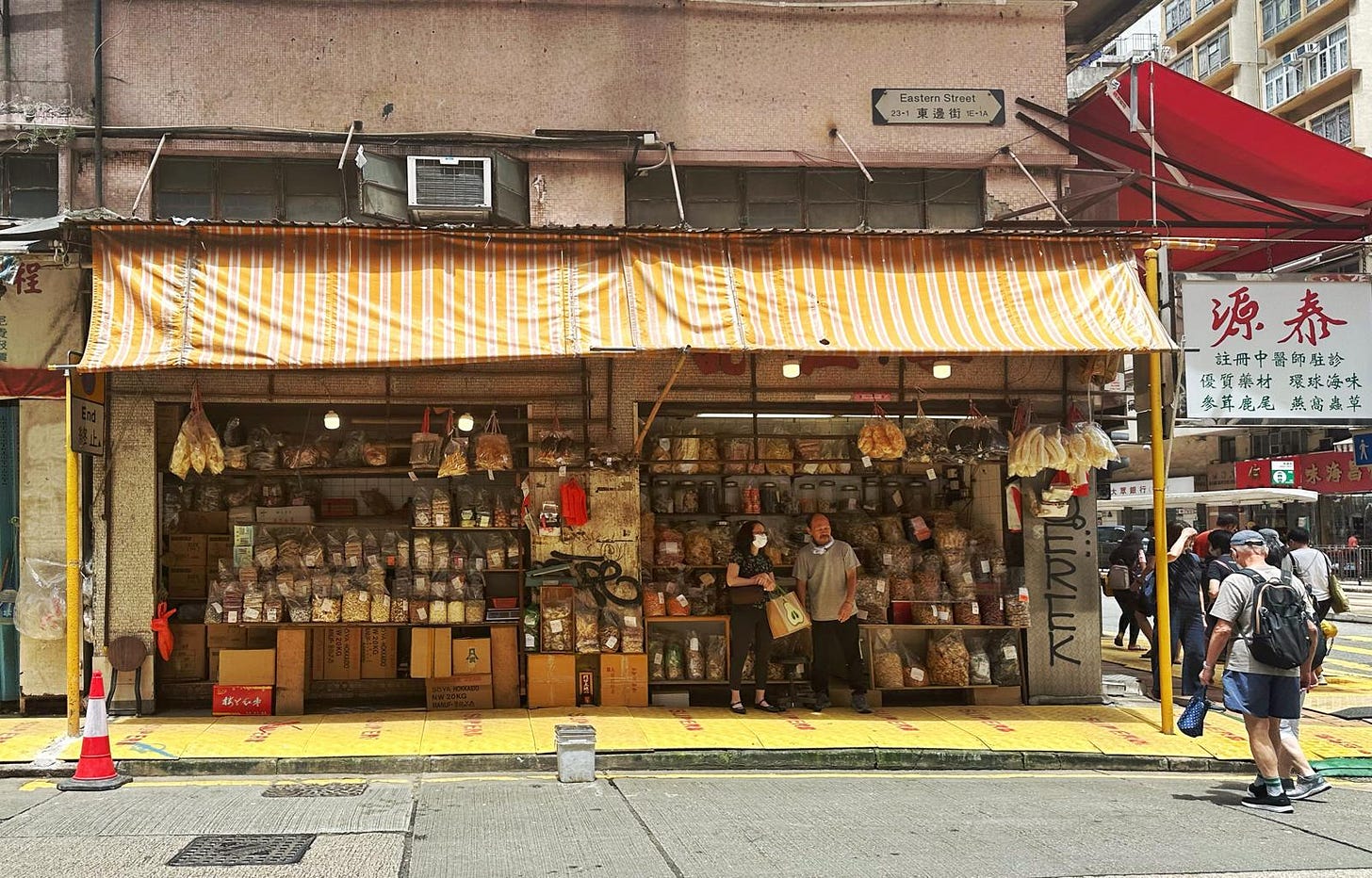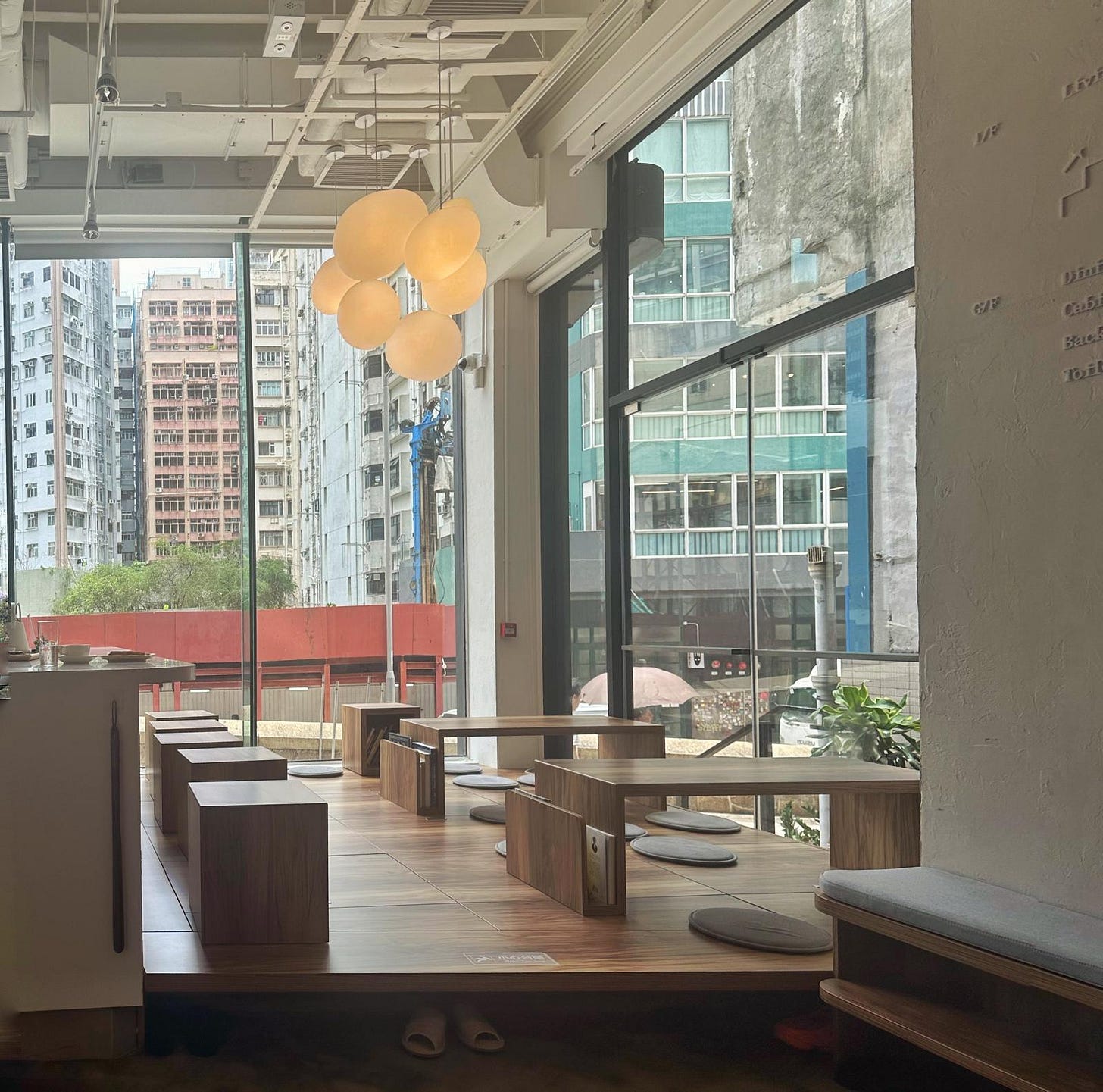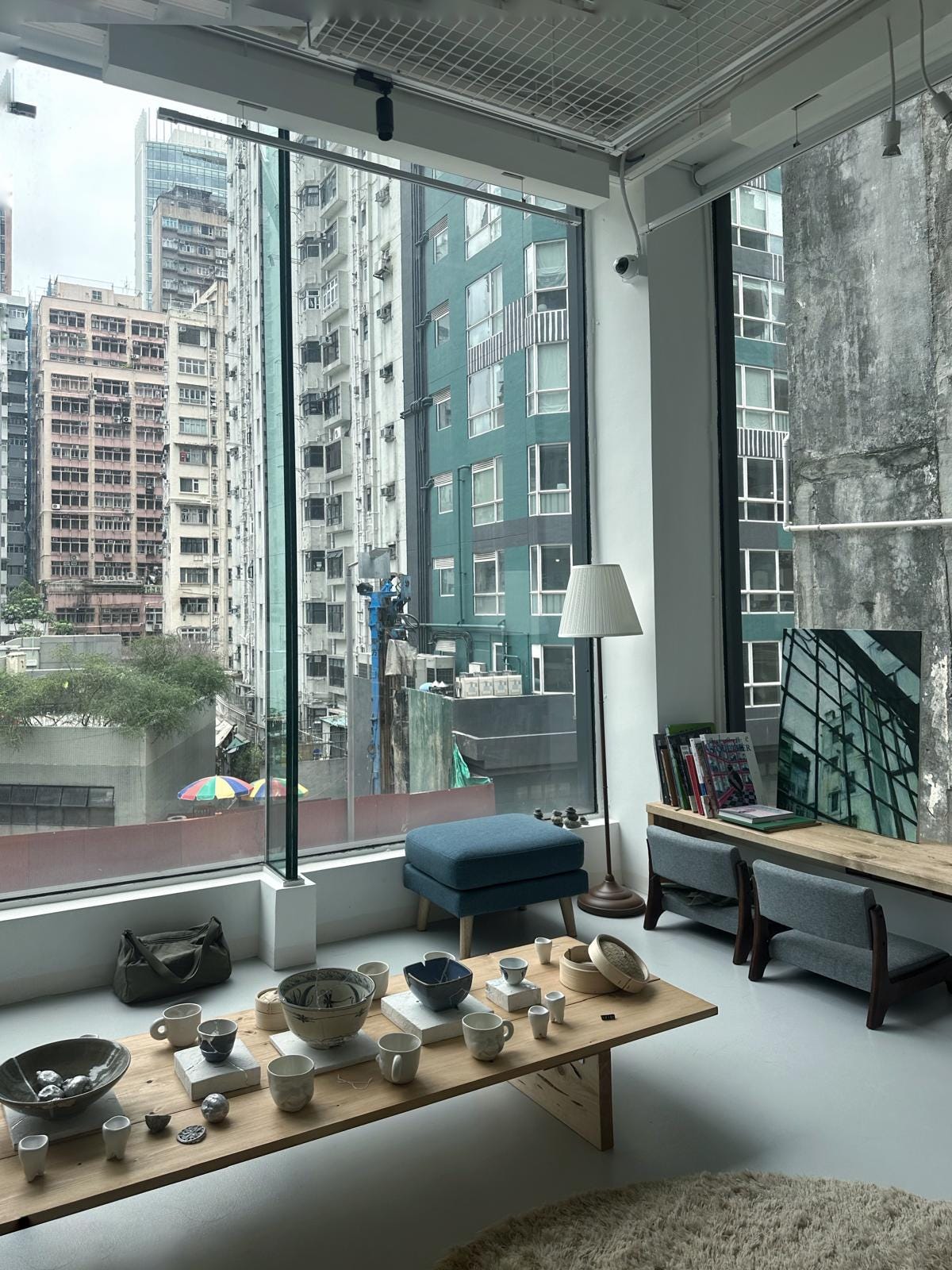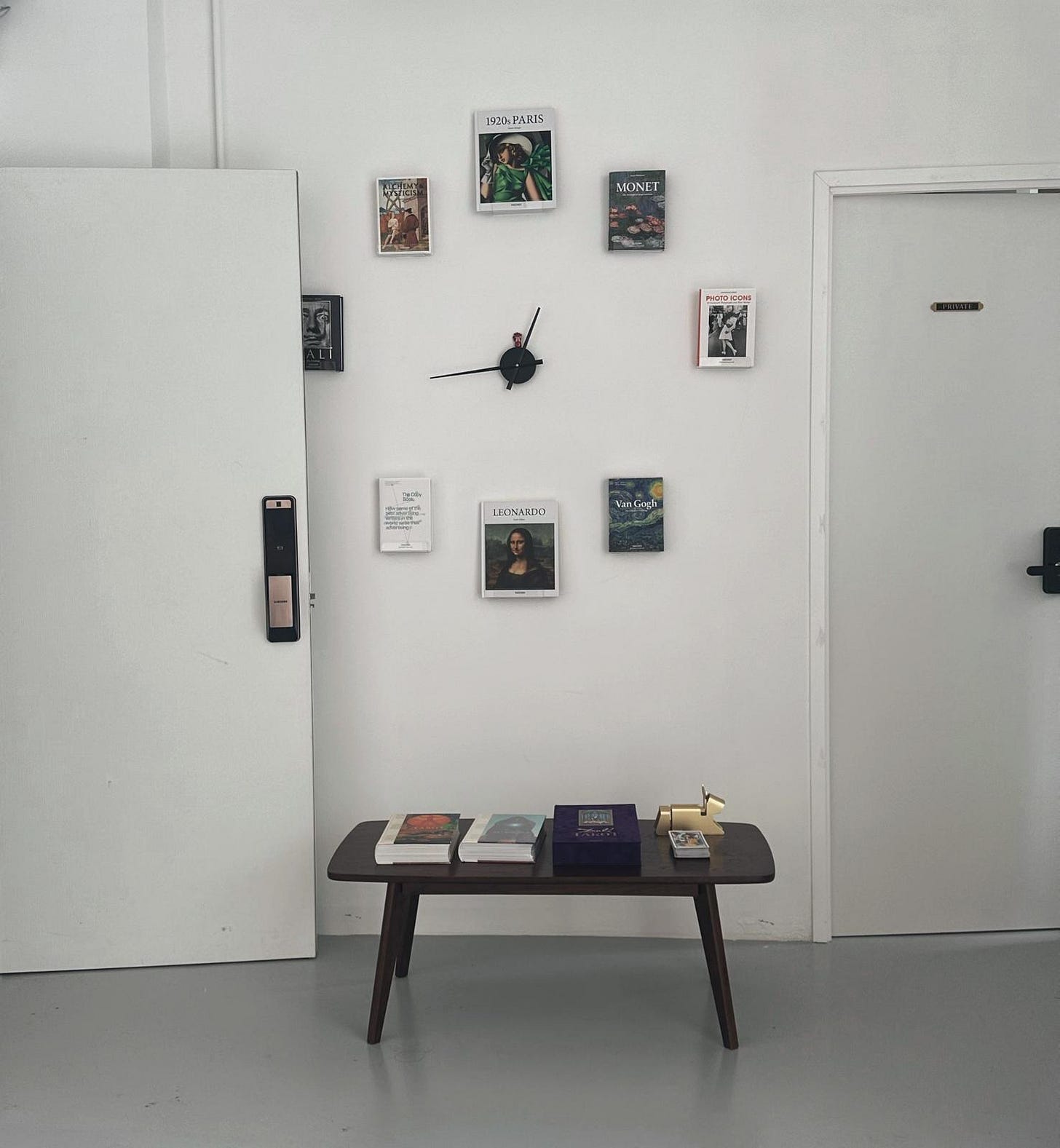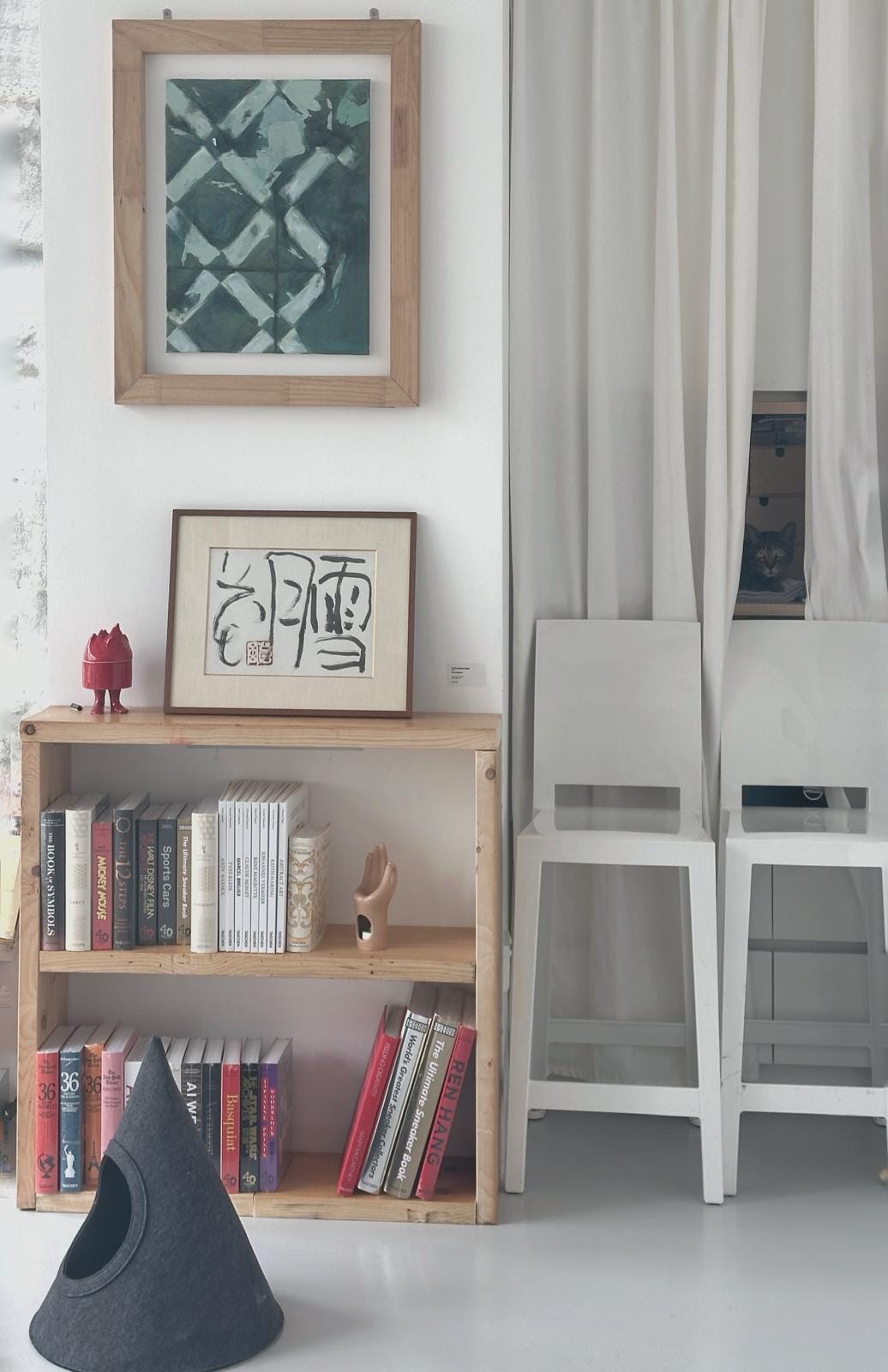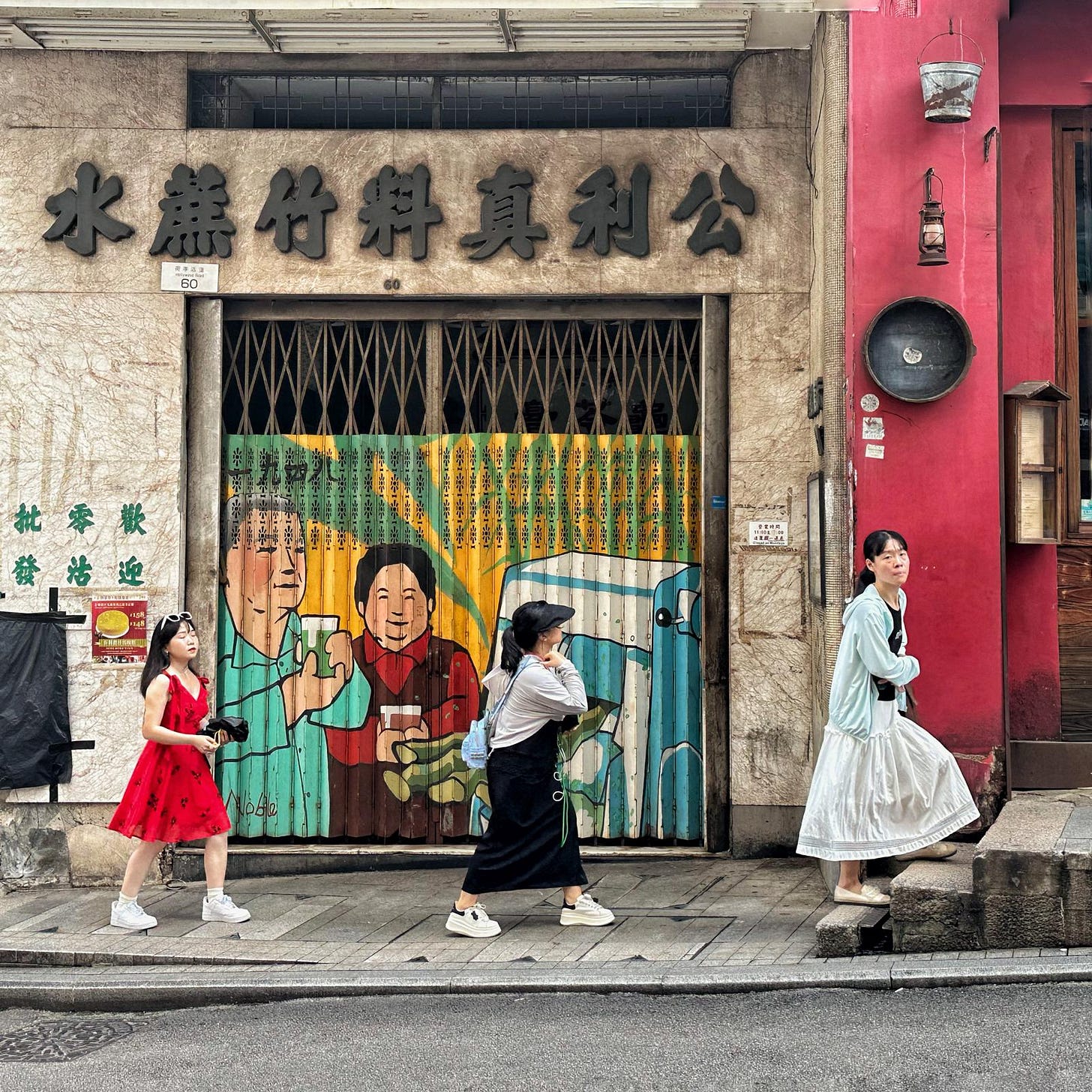TRAVEL - Hong Kong: how to build an art café
A story about following one's passion, and watching it bloom.
I had taken a massive risk to go freelance as a writer and marketing consultant a month before my trip to Hong Kong to visit old family friends. Those two weeks represented a rebirth for my creative journey after years working in a highly competitive corporate environment.
Though I predicted the rekindling of my love of writing and poetry, I underestimated the awe and inspiration that Hong Kong had in store for me.
I would find the resolve to follow my passions in obscure places: a newly opened art café, haunting street art, a kindred spirit within an antique shop, an unexpected exploration of Chinese calligraphy, a drive for freedom in a prison memorial, and the slow warmth of coffee in independent coffee shops.
This series of travel adventures starts in Sheung Wan, on Hong Kong Island. Clinging to its heritage as a fish market, the streets are pungent with the smell of dried fish along Queen’s Road West.
The road names are a small remnant of the legacy of British colonial rule, exaggerated with red buses coursing through the traffic, red post boxes dotted on each corner and landmarks like the Western Market scattered around the Island.
Under a caustic blue sky, the heat of Sheung Wan massaged every pore of my skin. My legs pulsed with the mechanical clicking of pedestrian crossings along Queen’s Road West — a glamorous street flaunting its pristine, air conditioned shops housing glistening clothes, art and restaurants behind glass doors.
I pushed ahead into Queen’s Road, where the vendors turned from high-street luxury into newspaper stalls, pharmacies and empty food shops with unidentifiable bark-like shapes in jars beside animal horns and large packets of dried fish.
I came across the catalyst of my creative explorations in Sai Ying Pin, where the smell of fish subsided, and shops sold incense in barrels like ammunition. The buildings wept with black stripes over the walls, a testament to years of condensation. Ztoryhome was an oasis in the otherwise cluttered scene dressed in LED lights: it was a clean square building with large bay windows over three floors.
The Unexpected Art Café
I peered into the geometric, clean structure like one would peer into the inner workings of a clock. I saw people working on the first floor, in an immaculate but peaceful white space with plants, and minimalist furniture. The ground floor lured me in with coffee, and the promise of chic, clean-looking layers of dark vanilla on the walls and counters, elegantly coupled with light wood furniture.
Walking through the entrance, we were welcomed by a tall, quiet and friendly barista, who pointed us toward their coffee tables in the next section of their design oasis. Prints of Tarot cards dotted the entrance hall. The café section was split into an elevated, Japanese-style place with cushions on the floor, low tables and accompanying books placed in their side pockets. The other side had seated areas carved into a bookshelf spanning the entire wall.
Literature, art, photography and travel coffee table books stood aloof in the shelves, in style-coordinated boxes. Each book seemed to flaunt its own texture, from interior design, to the meaning of dreams, arranged precisely according to colour.
The drinks were similarly subject to perfectionism of design: we had an iced mixture of tangerine, soda, chilli and lemongrass, crafted by the artist-turned mixologist behind the counter, who described how this place started.
“The ground floor is a café, but this is actually a studio space for artists,” the barista volunteered, “there’s a tour starting soon, if you’d like to join.”
Moments later, a small Cantonese woman with blonde ombre tinting he hair gathered the café residents. Among us were two women who’d been sitting opposite us, who must have been artists all along, marked by their magazine-like aesthetic, pouring tea from teapots into ceramic, handle-less mugs.
Our guide welcomed us as she stood by the bookshelf, giving it a slight push, revealing a secret doorway. We shuffled into an elevator that took us to the second floor. The passageway was clinical, housing a shoe rack and black slippers for use inside the studio.
“This space, though it’s a studio, is like our home, please take off your shoes.” our guide requested as we entered the space.
Once she opened the unassuming door, our eyes feasted on the sprawling view of Central Hong Kong through high-ceiling windows, uninhibited any beams. The studio was as precisely designed as the café downstairs: memory foam carpets, walls covered in bookshelves, and small tables along the window with unique pillowed seats beneath.
Here I found the best way to tell the time: with books. A clock filled a whole wall in the studio with the most influential art books mounted as digits.
The artworks in the space were pieces contributed by the local artists who use this space to create. Even without the title of ‘artist’, the studio is a space for the public, offering events exploring breathwork, tarot and meditations. Of course, no artist’s life is complete without their aloof animal muse - the cat, peeking behind floating chiffon curtains.
I couldn’t leave Ztoryhome without a coffee table book as a trinket. It had to be an edition of the Ztoryteller magazine, made by the owner of the place. I’d never seen a book like it. Its red cover changes its colour based on heat, and I couldn’t leave the impressions of my fingerprints to slowly fade, so I bought it.
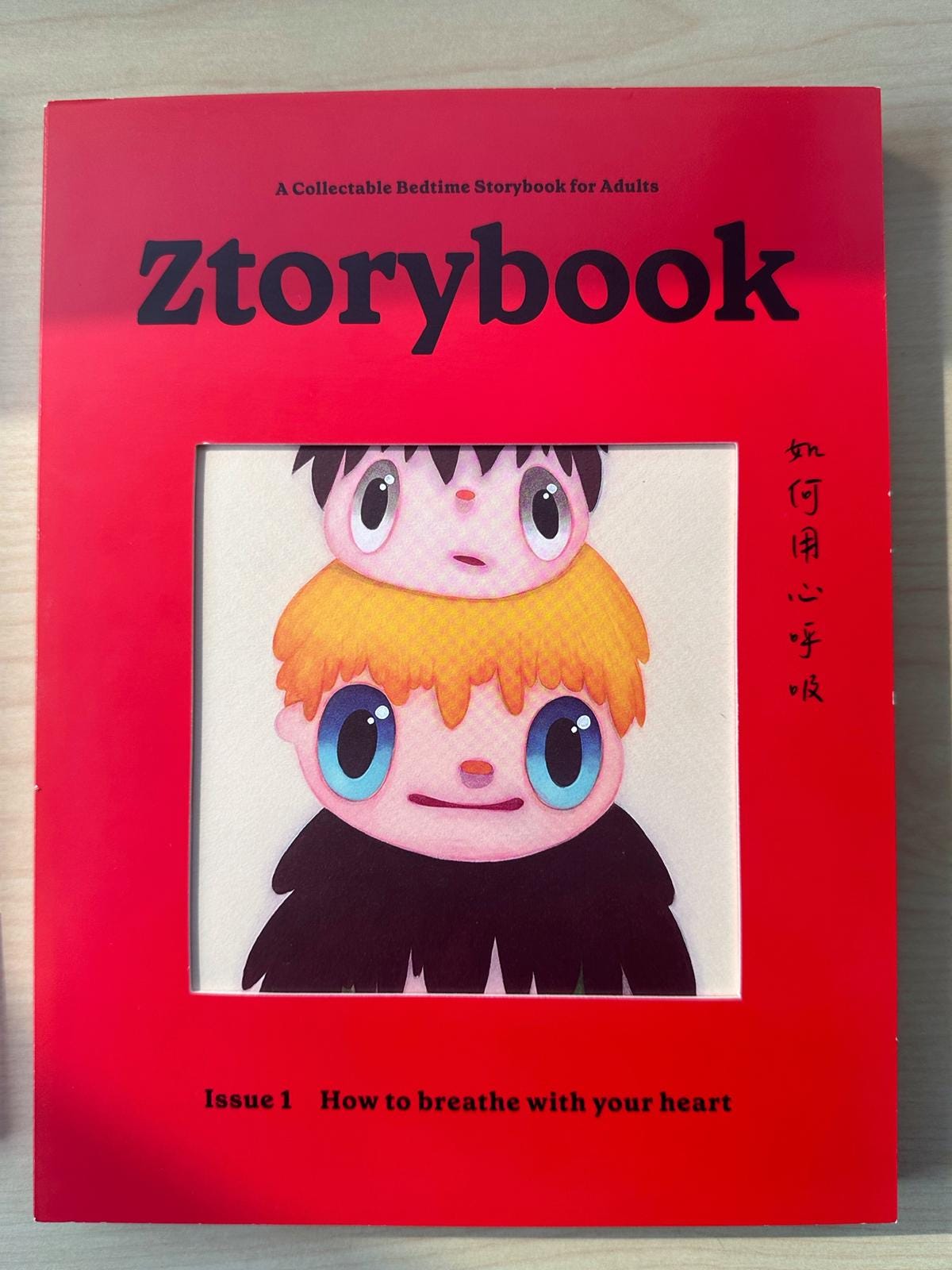
Upon telling our guide about my purchase, she was overjoyed. “I’m Alice,” she said, “I’m the editor.” The reason that this café even existed was a testament to the success of her short poems and fiction which she publishes on Instagram. The daily meditations since attracted the bigger players in the art publishing industry, who helped make her dream of building Ztoryhome a reality.
After our visit, and unforgettable opportunity to meet an artist realising her career on her own terms, I was determined to dig deeper into Hong Kong’s creative scene.
Taking in the plethora of books, art and design works, I embarked on a journey in the following days, to find the lesser-known crevices where art is made, photos are taken, and stationery is king.
My adventures later took me to an authentic calligraphy experience in Kowloon known only to locals, specialised vintage photography niches, and coffee shops where fellow art-lovers coalesce.
As part of a series, explore the next instalments of Hong Kong’s rich and thriving cultural scene.
Until next time,
Alexandra M. Gilbert


